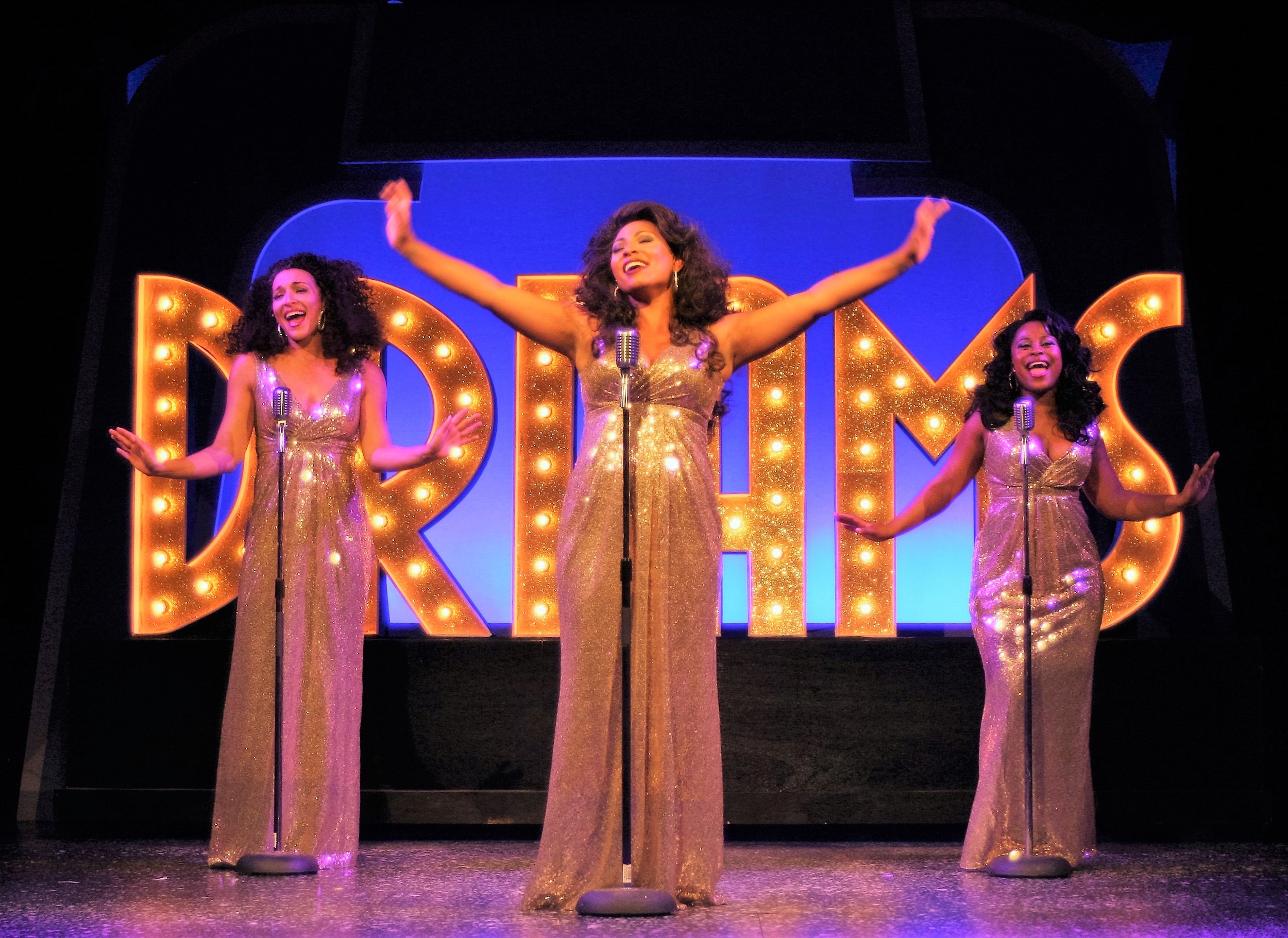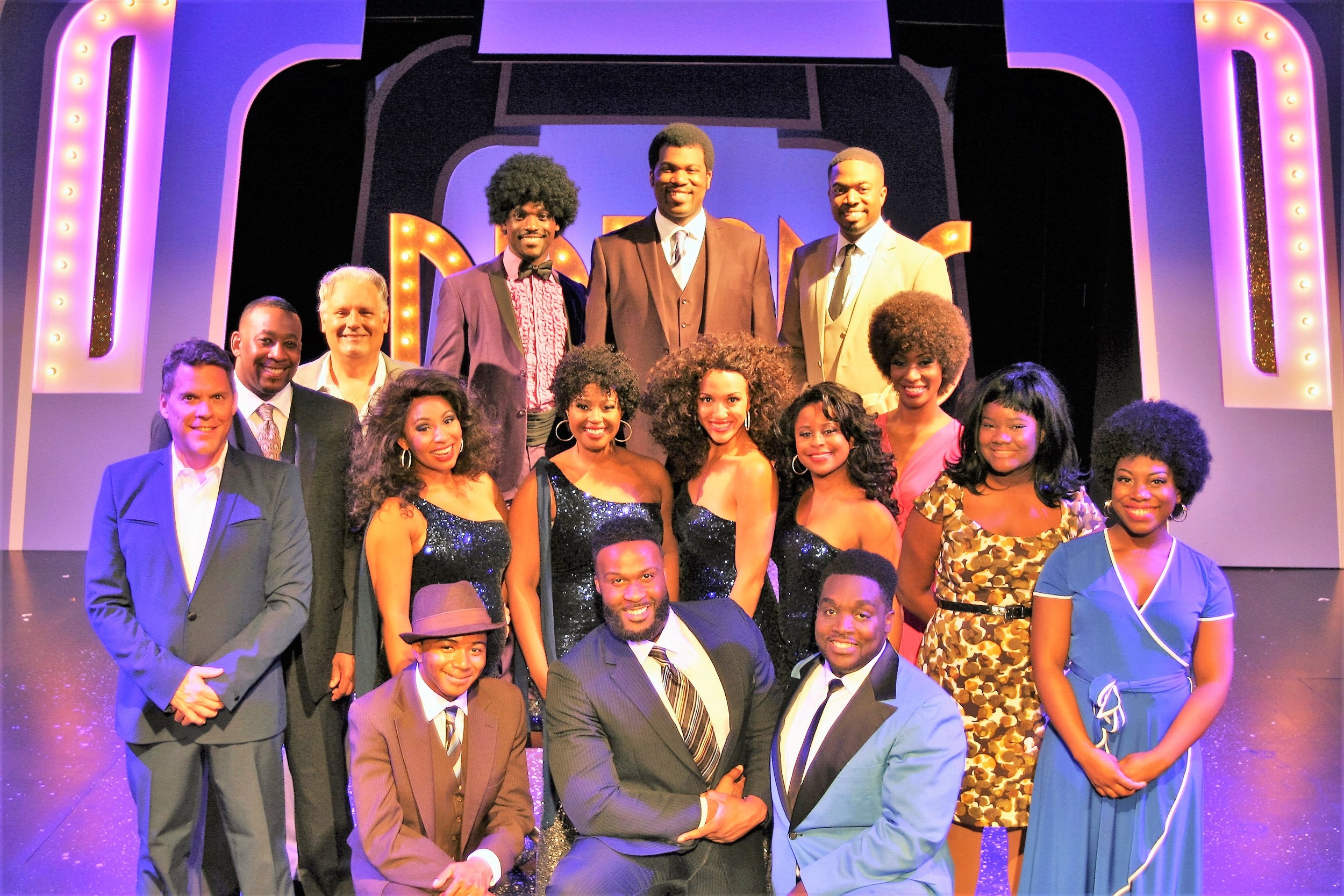‘Dreamgirls’ spotlights girl group’s rise to supreme showbiz success
When “Dreamgirls” made its Broadway debut in 1981, playwright Tom Eyen insisted that the African-American female singing trio at the heart of his rags-to-riches story was inspired by the Shirelles, Marvelettes and numerous other Motown girl groups of the 1960s.
It’s hard to believe, however, that Eyen had anyone but The Supremes in mind when he and composer Henry Krieger sat down to create “Dreamgirls,” which premiered last week at Jacksonville’s Alhambra Theatre & Dining. Anyone with more than a passing knowledge of The Supremes will see strong parallels between the true story of Florence Ballard, Mary Wilson and Diana Ross and the fictitious girl group The Dreams, who make it to the top of the music charts before romantic and professional rivalries tear the group apart.
Like the real-life Supremes – three Detroit teens who began their careers singing backup as “The Primettes” – “Dreamgirls” follows Chicago teens Effie, Lorrell and Deena, whose group The Dreamettes gets its big break singing backup for established star Jimmy “Thunder” Early. Under the management of smooth-talking Cadillac salesman Curtis Taylor Jr., The Dreamettes soon become The Dreams and rise from being backup singers to chart-topping artists in their own right.
But as with most rags-to-riches stories, fame doesn’t come without a cost. “Dreamgirls” mirrors The Supremes’ real-life drama, as soulful lead singer Effie is replaced by the beautiful Deena, whose lighter pop sound Curtis believes will appeal to a broader audience. The musical also follows the backstage romances that ultimately fracture the girls’ once-close friendship, leading to the breakup of the original act. The only significant departure from The Supremes’ saga, in fact, is that “Dreamgirls” gives The Dreams an emotional reunion and happy ending the real-life trio never enjoyed.
Along the way, “Dreamgirls” offers a revealing look into the cut-throat recording industry of the time and the challenges African American artists faced in achieving mainstream musical success. When Effie’s brother, C.C., writes a surefire hit song for Jimmy Early and The Dreams, the group is shocked when a Pat Boone-style white singer swoops in and takes the tune to the top of the charts. And when Curtis is able to book Jimmy into a Miami hotel that has never before presented black acts, he considers it a triumph – even though it means Jimmy must abandon his flamboyant style and act more like Perry Como than Little Richard.
While “Dreamgirls” lacks a list of well-known Broadway showstoppers, the Alhambra’s production features a strong cast with the vocal talent to shine even on some of the less memorable numbers. As the troubled Effie, Melessie Clark shows real emotion on “I Am Changing” and the show’s best-known song, “And I Am Telling You I’m Not Going.” The male members of the cast also excel on songs such as “Steppin’ to the Bad Side,” and as Jimmy “Thunder” Early, David Berry is a standout. While Berry’s performance as the outrageous lothario initially draws laughs, he imbues the character with real depth, as over the years Jimmy struggles to adapt to the changing times, changing musical tastes and a new era in which women like Lorrell are no longer willing to settle for being mistress to a married singer whose star is on the decline.
Peter M. Jackson puts his rich, deep bass to good use as Curtis, who learns too late that the ruthless pursuit of his dreams at the expense of everyone else’s costs him the only thing that matters in his life. For ultimately, “Dreamgirls” isn’t about the singing group The Dreams; it’s about the dreams we hold for our lives and what – and who – we are willing to sacrifice along the way to achieve them.
“Dreamgirls” runs through May 21 at the Alhambra Theatre & Dining. For tickets or more information, visit www.alhambrajax.com.










